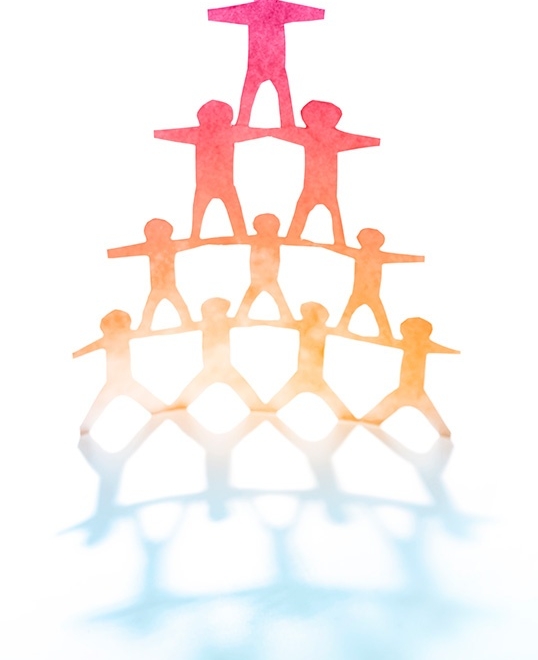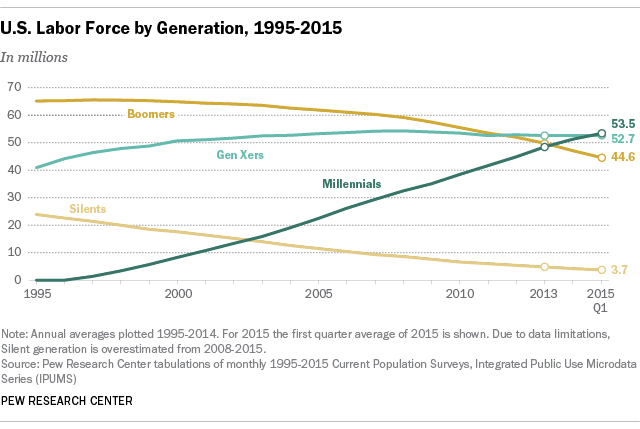Empowering the Global Workforce One Individual at a Time

I work with an organization whose executives struggle daily to advance a mission, achieve meaningful results that yield growth, and align its people around a shared vision. They are failing. Every day. They’re not unusual.
Business as we know it has been changing fundamentally for more than 50 years and exponentially faster in the last 20. Factors like a rapidly changing global environment, hyper-connected individuals and organizations, and the de-massification of products, functions, and operations continue to disrupt how businesses operate and go to market. They also pose real struggles for organizations striving to properly engage the right talent within a harmonized team.
Many organizations woefully neglect the tremendous collision of shifting societal expectations and their impact to business paradigms, specifically their workforce. There is no such thing anymore as a team that shows up, solves the same problems, and clocks out – day after day, in lockstep. And while most companies profess to understand the dynamic modern environment and the need to empower their people to solve complex problems through diverse and disruptive thinking that challenges standard processes, most fall short of following the model.
The promises and hurdles of the multi-generational workforce form a case in point.
In 2015, the U.S. hit a tipping point. Hundreds of thousands of Baby Boomers retire every day. Combine that
with the size of the Millennial demographic, and we have more young professionals than tenured individuals in the marketplace. The promise of diverse intellect, work styles and creativity are still being undermined by a cultural clash between older executive leadership and their Millennial colleagues.

I was recently engaged in a client discussion about leadership in the face of chaos. We hoped to gather perspectives about shaping business to accomplish important tasks like solving pressing social problems, identifying unique ways to connect disparate pieces of knowledge, and positioning new business value. But the executives around the table were quick to turn the conversation to what they perceived as the challenge the new workforce – “those needy Millennials who always want context.” Let me be clear. They weren’t saying something that is incorrect about the modern workforce. They do require more care and feeding. They do need context, awareness, and understanding. But that doesn’t preclude the fact that they bring very real value to their organizations. The challenge arises when organizational leaders assert false correlations at a surface level.
Unfortunately, I see this kind of myopathy all too often with business leaders. It’s caused by a collision of two notions that are hard to reconcile:
- The convergence of a dynamic societal landscape with the changing expectations and outlook of a demographically evolving workforce.
- The definition of business is shifting away from the consumer-based market toward the notion of community enablers that produce value and longevity.
Herein lies the problem. Each of these concepts will fundamentally change business by altering where power resides and challenging the strategies of going to market. Put them together, and it creates a virtually impossible puzzle. It is difficult to understand how society is changing and demanding new ways of business operations or the way in which value is manifesting from within our customer base.
Process is the alternative to paradigm.
It’s much simpler to focus on the cultural or generational divide in our immediate office setting than it is to acknowledge the deeper issue – our long-held, biased thought models. But without taking on the challenge to rethink our paradigms, we can’t overcome the hurdles to nurturing deeper talent pools and unifying teams.
That’s not to say it can’t be done. Toffler Associates recommends that business leaders look at three very distinct changes that effectively lay the groundwork for longer-term, more rooted workforce integration and impact. In every case, the focus is on creating inherent value and empowerment, rather than finding a quick fix solution to an apparent issue.
Emphasize learning over training.
Most organizations turn to training to fill talent gaps and better align their workforce. “Not tech savvy? We’ll send you to a course. Having trouble communicating? I know an online training program that will help you out.” Your workforce may gain some information and credentials, but the approach will fail to yield positive long-term results. Seek opportunities to create individual and collective learning through diverse experience and programming. Begin by identifying what talent gaps exist and the knowledge you have that could answer those needs; then seek creative ways to enable cross-workforce learning, instead of signing up your people for linear, task-focused training.
Prioritize integration over compliance.
Consider how front line supervisors influence your workforce. It’s likely that they are sending signals about compliance, not innovation. It’s probably not intentional – many organizations are still navigating their way through the brackish space between the Second and Third Waves. Instead of focusing opportunities like year-end performance assessments on results – regardless of means or metrics that may or may not align with broader company goals – you’re better served to consider softer skills like innovation and to place value on an individual’s ability to identify gaps and connect dots across the enterprise.
Foster value in relationships with outcome.
To improve integration and learning, our workforce needs to put a value on relationships. Regardless of what you may believe, the product you sell or the service you bring to market, all companies are run, maintained, and succeed or fail at the hands of people. Those people need to nurture meaningful relationships within and outside of the organization to learn, enhance their talent, and broaden the access of information and knowledge.
We’re well into the Knowledge Age, but old habits die hard. Industrial Era task mentality and organizational structure live on in many organizations, agnostic to specific industries or markets. Those mindsets will continue to pose hurdles for organizations that are trying to engage an incredibly diverse, natively innovation-focused workforce that wants to employ their talent in a fluid, purpose-driven environment. The solution begins with renouncing the false security of the old paradigms to create the space for an empowered and collaborative workforce in which each individual is given the responsibility to identify him or herself as the right talent to fill a role within a harmonized team.
It’s time to allow the members of your workforce to reveal their talent and place in the organization.
{{cta(‘bc9ba0a2-ec02-401a-8b7c-a568db3188ce’)}}
- Categories
- Leadership
- Workforce of the Future


 About the Authors
About the Authors